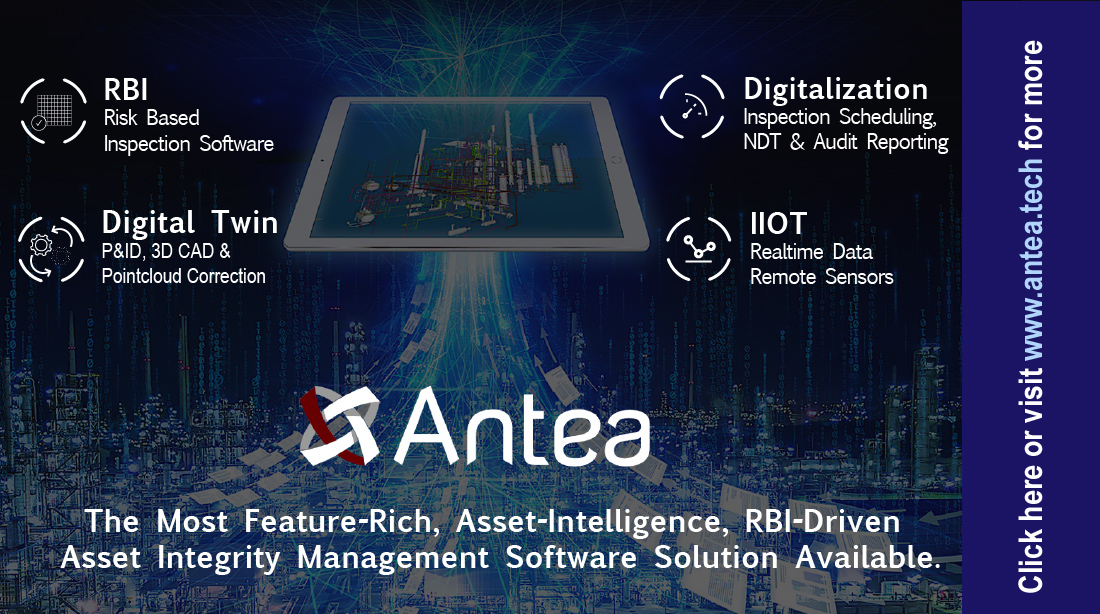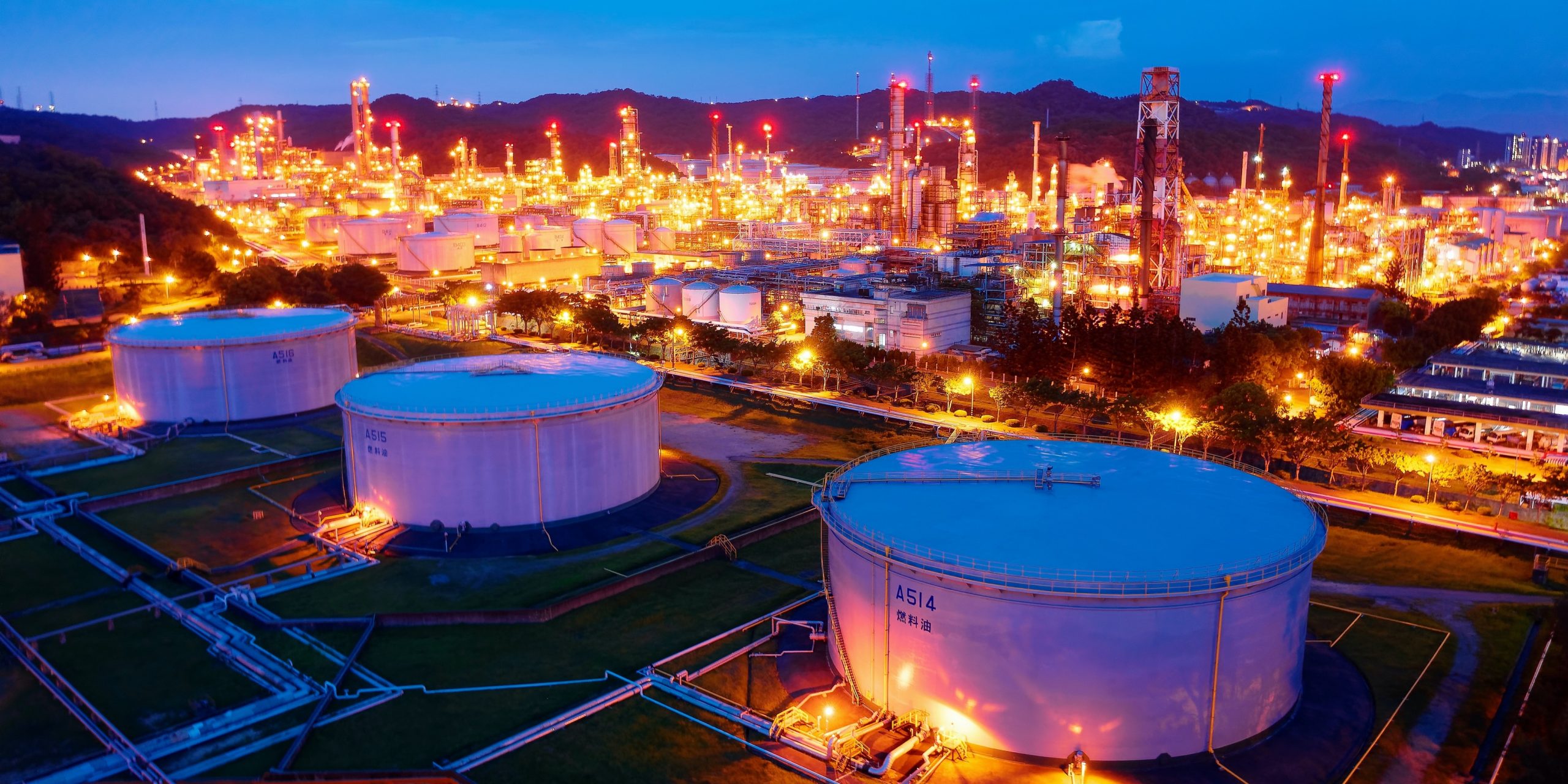Floyd Baker, VP at Antea North America, says digital twin can be defined as a digital representation or virtual model of a physical object, is not a new technology; as a concept, it has been around for years.
Yet, in the usage of asset integrity management (AIM) for oil and gas or petrochemical storage tanks and terminals, digital twin technology is evolving rapidly. It is a critical piece in the increasingly common movement toward digital transformation as many plants and facilities turn to laser mapping or 3D modelling to digitise their assets.
What are these companies discovering? The positive impact of digital twins on inspection planning, maintenance costs, turnaround, revenue generation, and safety are substantial and rapid in their return.
Applications for Mechanical Integrity of Storage Tanks and Terminals Digital twin as applied to AIM for storage tanks and terminals helps eliminate information silos and consolidate all asset data into a single version of the truth.
All data from disparate sources – including 2D, 3D modelling, point cloud data, smart P&IDs, PFDs, laser scanning, plot plans, and/or Google Maps – is consolidated and bidirectionally linked into one virtual replica of the entire plant or facility, including all assets within it and all components for each asset.
What does that mean, really? Imagine logging into your AIM software. On your screen is a visual representation of the plant that you can tap with one click to access the physical asset of interest.
From there, you can:
• View tank inspection, testing, and maintenance data.
• Plan tank maintenance and repairs.
• Schedule maintenance activities.
• Manage regulatory requirements and audits.
• Plan and schedule instrumentation work and calibrations.
• Manage safety systems and fire suppression equipment.
• Visualize volumetric data through digital twin (fill height, flow rates, temperature, etc.) via integrity operating windows (IOW) and remote sensors.
• Visualize and stage work activities from anywhere.
Why is this valuable? A single tank or terminal will frequently face critical issues which need to be resolved or repaired. If critical information on the asset’s condition is not immediately accessible, it can cause a reduction of production capacity or worse, a loss of containment of the entire tank. Such capacity losses and shutdowns can cost days or even months of lost opportunity from a single tank with a price tag of hundreds of thousands of dollars. If you consider a facility with multiple tanks experiencing similar issues and production losses, you can understand how quickly the economic impact can compound.
Thus, the ability to immediately access accurate and current information isn’t just convenient, it’s significant from a cost reduction standpoint as well. There is also the logistics factor of turnaround planning, which requires a lot of patience and due diligence. In many cases, the kind of information you need to plan activities on any given asset can require hours–sometimes even days–to compile.
By contrast, the immediate accessibility of data provided by a digital twin can reduce that access time to minutes or even seconds. It equates to transparent visibility, which can save hours of searching and researching files and shared drives, and this again equates to cost savings.
The outage can be planned more intelligently thanks to more accurate information, and the time it takes to complete the outage work can be drastically reduced. The Power of Visualization One of the biggest impediments to effective mechanical integrity management is the time it takes to gather, catalogue, and assess large volumes of data.
When data exists in silos, it is scattered across an array of offices or file types, or is collected from a myriad of disparate sources, which makes it difficult to interpret the big picture for informed decision making. It can also add hours to simple tasks.
Worse, it increases the risk of acting on outdated or incorrect information – wasting additional resources if, say, the wrong replacement parts are ordered, or the wrong repair type is scheduled. The digital twin empowers you with the ability to gain insights from integrated platforms, process, and equipment data. It improves the ability to understand the live condition of your assets by establishing a visual context with risk-level colour coding and one-click access to the most recent information.
Because inspection data can be uploaded into the database from anywhere (even a mobile tablet directly from the field) and immediately replicated in the digital twin, the database can be kept evergreen as a single version of the truth. Digital twin can also be kept evergreen with data from other legacy sources (and vice versa). Seamless integration with ERP, CMMS, SAP, and legacy systems means an effective intersection between information technology and operational technology.
For more information visit antea.tech




















